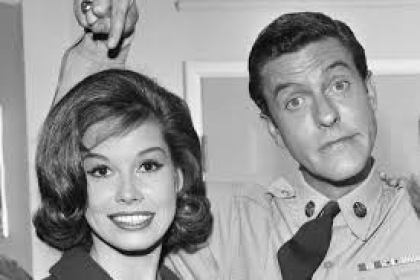How to Write Emotional Scenes (Without Making Them Cringey)
 Learning how to write emotional scenes is one of the single most important feats any writer must rise to. We want fiction to make us feel something. I’m not talking just a little twinge of satisfaction here or there. I’m talking full-on emotional experiences: tears, laughter, cheers, even rage on occasion.
Learning how to write emotional scenes is one of the single most important feats any writer must rise to. We want fiction to make us feel something. I’m not talking just a little twinge of satisfaction here or there. I’m talking full-on emotional experiences: tears, laughter, cheers, even rage on occasion.
Scenes in which characters feel these powerful emotions should usually inspire the same feelings from readers. When done well, these powerhouse scenes become the cornerstones of the entire story. They are the moments audiences are likely to remember long after they may have forgotten beautiful prose or the specifics of the plot.
However, there are emotions you don’t want readers to feel. You don’t want them feeling… icky. Or awkward. When they start reading what should be your story’s most powerful emotional moments, you don’t want them to cringe in response.
You know what I’m talking about. These emotional missteps happen in scenes that are obviously intended to make you feel a certain way about the characters and their actions, but you… don’t.
We’ve all read or watched:
The proclamation of love, complete with singing violins, that was supposed to turn us into sighing mush-puddles, but instead had us wringing out our T-shirts to try to escape the soppiness.The religious conversion scene that was intended to offer us the feeling of redemptive catharsis, but instead had us stonily resenting the thinly disguised sermon.The backstory reveal that was designed to get us sniffling when the emotionally-repressed protagonist put it all out there and shared a vulnerable secret, but instead had us responding with skepticism and irritation because his quick turnabout made the confession feel phony.And the list goes on.
In a recent email, reader Jessica commented to me about how, when deeply emotional scenes are executed poorly, the audience “just wants to run and hide.” She goes on:
And yet, some storytellers can pull this off, and not only don’t you want to cringe, it’s your favorite part of the story. So I was wondering if you had any tips around the difference between achieving that heart-melting thrill versus falling into the cringe, cover your eyes for a moment kind of scene.
I completely relate to the sheer difficulty of creating emotional scenes that don’t feel cringey. When I first started writing, these scenes were my least favorite to write. I cringed my own way through all of them. I had to do a lot of soul-searching and work to figure out how to write emotional scenes. What I’ve learned over the many years since is that the single most important key to writing emotional scenes that truly pull their weight is verisimilitude.
Basically: keep it real. Be vulnerable, be honest—and then learn a few tricks to make sure you’re conveying that personal vulnerability and honesty in a way that really comes across on the page.
Today, I want to dig into this a little deeper.
The Main Two Reasons Emotional Scenes Can Come Off as “Cringey”If you look at our short list of “cringey” emotional scenes, above, you’ll notice all of them could just as easily be found in a list of anyone’s favorite scenes. Love scenes, redemption scenes, personal revelation scenes. That’s the stuff of great fiction. In many types of stories, these scenes are the exact reason we’re investing ourselves in them. These scenes are the salt that brings out the story’s flavor.
So where do authors go wrong? Why can two different authors take the same sort of scene, with one of them producing something deeply moving, while the other just makes audiences want to throw up?
To my mind, there are two main reasons why emotional scenes go off the rails. Both have to do, simply, with bad writing.
1. The Writing Is “On the Nose”The first reason is simply that the emotion in the scene is being portrayed in a way that is too straightforward and “on the nose.” Put simply, this means the author has eliminated all subtext and nuance by stating the facts of the scene too plainly. Not only does this rob realism, but it can also make readers feel as if the author is trying to force them to feel a certain way.
Poorly done conversion scenes are great example of this. Usually, they are very heavy on words (sermons, confessions, prayers, etc.) that are intended to convert not just the characters but the readers. The problem is that if readers remain unconvinced for their own sakes, they are likely to feel unconvinced on the character’s behalf as well. When the character then rises up a changed person, we cringe… because, in fact, we aren’t feeling it.
2. The Writing Is ClichedQuite often, the reason an emotional scene is on the nose in the first place is because the author has failed to look past the obvious choices for the scene. We might write that profession of love as a scene out in the rain because… where else would a dramatic proclamation take place? Since we ourselves have seen a hundred such scenes, we can take the details for granted and assume they will carry the emotional weight of the story all by themselves. However, because readers are so familiar with this type of scene, they are that much less likely to resonate with its emotionalism.
This isn’t to say familiar scenes are always the wrong choice, but you must realize you’re walking familiar ground and work that much harder to bring the emotion to life in a way that is both unique and authentic to your story and your characters.
How to Write Emotional Scenes: 6 Key IngredientsBottom line: readers cringe when they know the author is trying to make them feel a certain way… and failing. It’s like watching a stand-up comedian who is missing the mark so badly that you’re embarrassed. Cringe.
All we have to do to write emotionally successful scenes is engineer them so readers can successfully access the intended emotions. Usually, you will want readers to share your POV character’s emotions. Other times, you may want them to feel a certain way about the character (as, for example, when the character has done something heinous).
Regardless, your starting point is getting clear about what you want readers to feel. From there, you can use the following six ingredients to mix up a perfect recipe of emotionally powerful scenes.
1. HonestyThe first step is to get super honest with yourself. Don’t phone it in… ever actually, but especially in scenes meant to be the emotional cornerstones of your entire story.
If your characters are out there in the rain about to share an epic kiss, don’t try to just paste the requisite emotions on top. Dig deep and be honest. What would you be feeling in a scene like this?
Granted, you may be a totally different personality from your characters, but there are basic human reactions that will give you a starting point. For instance, might you feel, you know, soaked? And cold? Might you be shivering too hard to enjoy the moment? Maybe a more romantic beat could arise from the characters realizing this and taking care of each other by going inside to get warm first?
2. VulnerabilityNot every emotion we write in our fiction will be grounded in our own personal experiences and vulnerabilities. But the more vulnerable you can get in writing your story’s most emotional scenes, the more powerful they will inevitably be.
For instance, sometimes this means tapping into your own feelings of uncertainty and courage in making a difficult confession to someone else. But it might also mean nothing more than being vulnerable enough to write this scene as honestly as you can.
Often, cringey scenes result when writers want to create a certain type of scene but aren’t willing to really go there. If you need your characters to be vulnerable with each other, then you need to be vulnerable with readers. Face your own embarrassment or insecurity and leave it all out there on the page. Readers can almost always tell when you’re cutting corners.
3. OriginalityNot every emotional scene needs to be one readers have never before experienced. In fact, the universal scenes talked about above are staples of good fiction, not least because they are staples in life.
For example, redemption might look different for each us, but we’ve all experienced it, to one degree or another. You don’t have to reinvent the wheel by avoiding common emotions and trying to come up with an emotional experience no one has ever encountered before. But do look for ways in which you can put a new spin on a familiar type of scene. Rain at a funeral is classic symbolism for a reason, but it won’t jar readers into new emotional terrain.
Although the show has its problems, I thought the opening scene of Yellowstone, [SPOILER] in which protagonist John Dutton has to put down a horse injured in an auto accident [/SPOILER] was one of the best openings I’ve seen in a long time. Why? Because it surprised me. I wasn’t expecting it. It wasn’t something I’d ever seen used like that before. It was emotionally effective in large part because it was fresh.

The opening scene of Yellowstone is an emotional scene thanks to its brutal originality.
4. SubtextStory subtext is the secret sauce. What you don’t say—what you leave between the lines—has the power to be some of the most emotionally powerful stuff in your entire story. This doesn’t necessarily mean you can never say it, but at the very least wait. Wait until readers have earned it. Wait until they’re panting for it. The wait, in itself, can give them a reason to care.
If you pop your redemption scene into the first chapter, readers will believe in it far less than if they’ve suffered through consequential chapter after consequential chapter with your characters. A careful use of subtext will aid you in building your readers‘ emotions, so that when you reach your most emotionally important scenes, they are ready to feel their full impact.
5. ContextOf course, where there is subtext, there must also be context. If subtext is what isn’t said, context is what is said. You must use the context to build up to these important scenes.
Characters who eventually profess dramatic love to one another must first fall in love—gradually and realistically.Characters who seek redemption must first work through their anger, guilt, and sorrow.Characters who tell their secrets to other characters must first be given reasons to learn to trust those other characters and to desire their trust in return.Cringey scenes are often the result of poor setup. The audience must desperately want (or not want, as the case may be) the big scenes. The build-up is half the fun. You, as the author, must earn the right to make your readers feel the big emotions.
6. Dramatization (Showing vs. Telling)When it comes time to write your big emotional scenes, you will almost always want to rely more on dramatization than summation—on showing more than telling. This is, in fact, why we like proclamations of love in the rain. They show us what the characters are feeling, instead calmly telling us the characters are about to be happily ever after.
One of my favorite illustrations of this is from the classic sitcom The Dick Van Dyke Show. I remember reading an interview with showrunner Carl Reiner, who commented that the writers never let the leading couple, Rob and Laura (played by Dick Van Dyke and Mary Tyler Moore), speak the words “I love you” to each other. Instead, the writers looked for ways to show how much the couple loved in other, in every single episode.

Classic sitcom couple Rob and Laura Petrie never said “I love you” to each other. Showrunner Carl Reiner knew how to write emotional scenes that effectively dramatized the couple’s affection.
***
Cringey emotional scenes are usually a sign the writer failed to earn emotional sympathy with readers. If you are willing to put in your own emotional hard work in order to build a story that fully supports your story’s most important moments, you will have written something readers are likely to remember for a long time to come.
Wordplayers, tell me your opinions! What do you find most difficult about how to write emotional scenes? Tell me in the comments!Click the “Play” button to Listen to Audio Version (or subscribe to the Helping Writers Become Authors podcast in Apple Podcast or Amazon Music).
___
Love Helping Writers Become Authors? You can now become a patron. (Huge thanks to those of you who are already part of my Patreon family!)The post How to Write Emotional Scenes (Without Making Them Cringey) appeared first on Helping Writers Become Authors.
 newest »
newest »
 Really good stuff, as usual!
Really good stuff, as usual!




